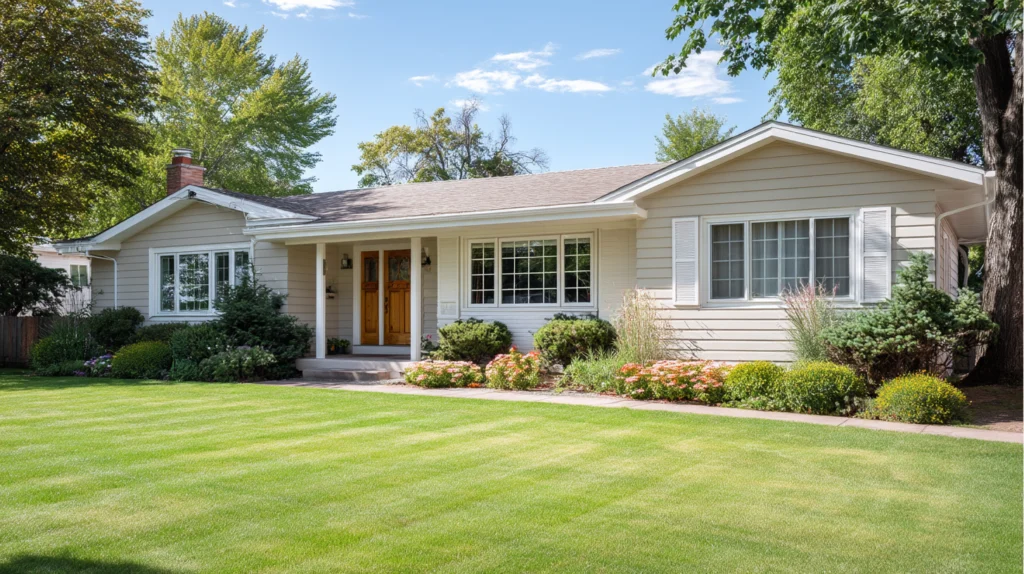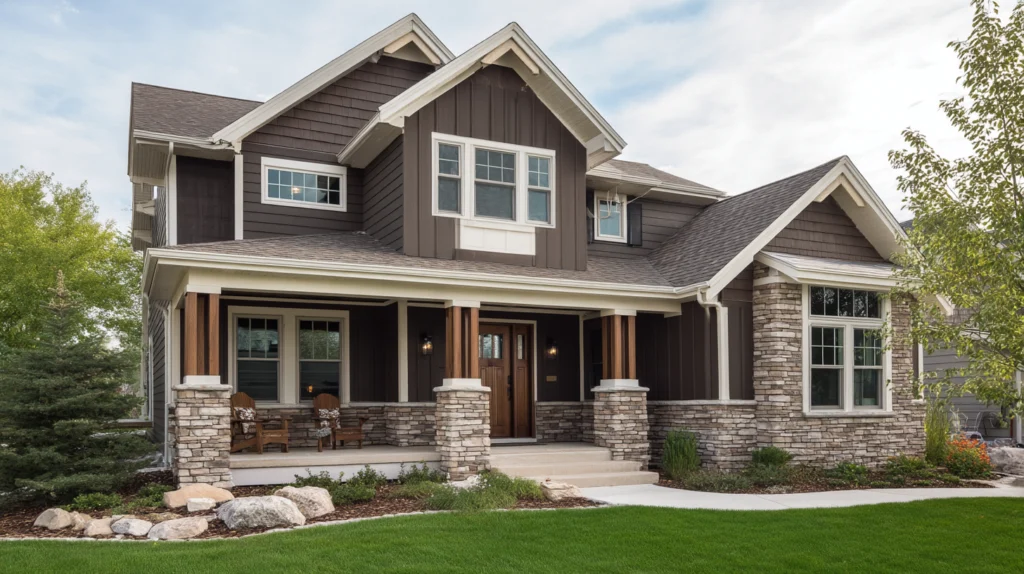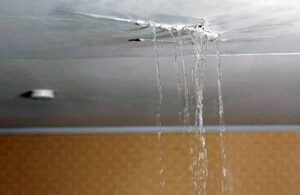When you notice unusual marks or damage on your roof, you may worry whether it is roof blistering vs hail damage or something in between. Understanding how asphalt shingles respond to heat, storm damage, manufacturing defects, and poor attic ventilation is crucial for protecting your roof’s life. At Cobex Construction Group, we care about helping you recognize roof blistering and hail damage early so your repair costs stay manageable and your home stays safe.
Why Knowing the Difference Is So Important
Insurance Company Implications and Repair Costs
Hail damage often qualifies for coverage by your insurance company because hail storms are sudden external events. When hail strikes roof surfaces with significant force, your damaged roof may show signs that support an insurance claim. On the other hand, roof blistering is usually not covered unless the damage is due to manufacturing defects or improper ventilation. Insurance policies commonly deny claims for blistering and only approve for hail damage. So if you mistake blistering for hail damage—or hail damage for blistering—your repair costs may fall fully on you.
Warranty and Roofing Materials Considerations
Your roof’s warranty may cover hail damage under certain conditions, especially if you used high quality roofing materials like impact-resistant shingles. But it often excludes issues tied to roof blistering, which result from internal problems such as trapped moisture, poor ventilation, or defects in shingle manufacturing. When evaluating your warranty, always check whether your roof shingles were properly installed and whether the shingle manufacturing process was thorough. Poor installation or low-quality control can lead to blistering or premature failure.
What Is Roof Blistering

Definition and How Blistering Occurs
Roof blistering happens when moisture trapped beneath the surface or gas produced in the asphalt bitumen asphalt layer cannot escape. Poor attic ventilation or improper ventilation allows heat to build up in the attic. The sun heats the roof shingles, trapping that heat and creating extreme heat conditions. Moisture trapped within the shingles or the roof deck expands and forms bubble like formations on roof shingles. Over time, those blisters may pop, leading to popped blisters that expose the underlying asphalt bitumen or fiberglass reinforcement mat. These bubbles are often cosmetic at first, but over time compromise the roof’s integrity.
Causes of Shingle Blistering
- Trapped moisture during shingle manufacturing or wrong storage prior to installation
- Poor attic ventilation allowing heat and moisture to build up under the roof structure
- Improper installation techniques such as nails placed incorrectly or shingles installed before the substrate is fully dry
- Low quality roofing materials or defects in shingle manufacturing that leave residual hydrocarbons in the asphalt bitumen
Visual Signs You Can Spot
On the roof surface, you may see elevated sections that look like bubbles or raised areas on the asphalt shingles. Sometimes the surface is smooth, otherwise irregular. Shingle blisters may appear singly or in clusters. They vary in size from tiny dots to larger patches. Some have popped blisters exposing dark asphalt layer. Others remain unopened, but discoloration or granular wear may signal trouble. You might also notice curling shingles, especially around edges or where the roof surface gets the most heat exposure.
What Happens With Hail Damage
How Hail Damage Affects Asphalt Shingles
When hailstones hit roof shingles, the impact force can dislodge protective granules, fracture the asphalt bitumen layer, or even damage the fiberglass or felt mat underneath. Hail damage occurs instantly. Roofing materials absorb the impact depending on hail damage hailstone size, wind speed, or existing roof condition. Larger hailstones hit harder, causing more significant damage and can create deep dents. Often, dents or cracks or broken tabs appear. Hail damaged shingles lose granules, exposing lower layers which degrade faster.
Signs That Suggest Hail Damage
- Dented shingles showing round dents or concave impressions where hailstones struck
- Cracks or fractures in the asphalt bitumen or shingle surface, sometimes visible in the fiberglass reinforcement beneath
- Missing granules, especially around the impact points or in gutters, indicating the protective layer has been worn away
- Damage to other roof components such as flashing, vents, gutters, or siding—the collateral damage helps support the idea that a hail storm caused broader roof damage
- Hailstones hit the roof at angles, creating random distribution of impacts across the roof surface
Comparing Roof Blistering and Hail Damage

Key Differences at a Glance
| Feature | Shingle Blistering | Hail Damage |
|---|---|---|
| How damage forms | Trapped moisture, leftover hydrocarbons, heat buildup, poor ventilation, manufacturing defects | External impact from hailstones, wind speed, direction, storm damage |
| Shape of damage | Raised bubble like formations, sometimes popped blisters, irregular shapes | Circular dents, concave impressions, sharp cracks or fractures |
| Texture / touch | Blister areas feel soft or spongy, may inflate under heat or show curling shingles | Impact spots feel hard, bruised, may crack or be depressed |
| Pattern across roof | More random, localized, often in zones with poor ventilation or where sun hits strongly | More widespread across entire roof slopes, especially exposed surfaces, edges, ridges |
| Warranty / insurance response | Usually not covered unless defect or improper installation proved | More likely to be covered in insurance claim, storm damage, provided you document correctly |
Why It Makes All the Difference
Correctly identifying whether you have hail damage vs blistering affects how quickly you can act, how much cost you may pay yourself, and whether your insurance company will cover repair or roof replacement. It also impacts what kind of roofing contractor you hire, your expectations for your roof’s lifespan, and how you prevent future roofing issues. An untrained eye can easily confuse these two, so professional roof inspections are essential.
How to Inspect Roof Damage Like a Pro
Safe Inspection Tips for Homeowners
You do not have to climb dangerously onto your roof. Often you can spot many clues from the ground or using a ladder. Take binoculars, examine the roof surface, look for signs like curled shingles or soft, raised bubbles. Look at gutters for loose granules after storms. Inspect vents for dents or damage. Use chalk or rub metal surfaces to find indentations in soft metals that correlate with hail strikes.
When to Call an Experienced Roofing Contractor
If you suspect hail damage, or if you see popped blisters, large areas of affected shingles, a damaged roof, or structural damage, then call a professional roofer. A professional inspection will assess the extent of damage, whether roof replacement or repair is needed, and create documentation useful for insurance claim and warranty support.
What Professionals Look For
An experienced roofing contractor will check under shingles, inspect roof deck condition, measure the size of hailstones implied by impact patterns, examine granule loss patterns, verify if there are fractures or embedded ceramic granules, evaluate soft metal components, and check ventilation conditions. Often they conduct a free roof inspection, particularly after a storm, so you have evidence when filing an insurance claim.
Common Scenarios and Case Studies

Scenario: Blistering From Poor Attic Ventilation
A homeowner installs asphalt shingles on a steep roof during summer. Poor attic ventilation causes the roof deck to trap heat during the day. The sun heats the roof shingles. Moisture trapped under shingles or the deck expands. Bubble like formations appear. Within a few years, the blisters begin to pop, which speeds up granule loss. The roof’s life starts shortening.
Scenario: Hail Storm Hits Neighborhood
A hail storm with large hailstones and high wind speed comes through. Roofs in the entire neighborhood get similar roof damage. Dents appear on asphalt shingles, and missing granules are found in gutters. Flashing and ducts show dented soft metals. Homeowners notice storm damage and report to their insurance company. Many insurance claims are approved because collateral damage supports roof damage cause.
What to Do After You Spot Damage
Document Everything
Take lots of photos of damaged shingles from various angles. Show missing granules in gutters. Document dented shingles, round dents, or popped blisters. Note the date, time, and weather history. Especially after a hail storm, keep weather reports and write down when damage was first observed.
Evaluate Repair Costs vs Roof Replacement
Minor issues such as small blistered areas or isolated hail dents may be repaired by replacing affected shingles if the roof surface remains largely intact. But when damage is widespread, roof replacement may be most cost-effective. Especially when the roof’s integrity is compromised or structural damage is present.
Work With Your Insurance Company
If your roof has suffered hail damage, properly document roof inspections. Get written reports from an experienced roofing contractor. Use measurements of hailstone size implied by dents or damage. Reference warranty and material specifications. Show condition before storm. You may need to negotiate coverage, especially if the insurance company tries to attribute damage to blistering rather than hail.
Choose the Right Roofing Materials
Selecting high quality shingles, especially those with impact-resistant ratings, helps cover hail damage better. Selecting roofing materials with strong warranties helps resist both hail damage and blistering. Over-investing in poor materials often leads to poor performance.
Preventing Roof Blistering and Hail Damage

Improve Ventilation and Proper Attic Ventilation
Ensure proper attic ventilation from ridge vents, soffit vents, and exhaust vents. This helps prevent trapped heat and trapped moisture, which contribute to roof blistering. Installing ventilation correctly and ensuring even airflow prevents prolonged exposure to extreme heat under the roof deck.
Use High Quality Roofing Materials
Choose asphalt shingles from reputable manufacturers. Ensure shingle manufacturing has quality controls and no asphalt bitumen defects. High quality shingles resist hailstones better and show less blistering. Blistering often arises where materials are sub-standard.
Proper Installation and Maintenance
Proper installation includes ensuring shingle underlayment is dry, installation over solid deck, correct nailing pattern, and avoiding overlaps that trap moisture. Prevent poor installation that leads to major problems. Regular roof inspections help catch blistering, popping, missing granules, or roof shingles that are damaged before they grow worse.
Storm Preparedness and Roofing Upgrades
If you live in an area prone to hail storms, consider impact-rated shingles. Upgrade to roofing materials that are Class 3 or Class 4 impact resistance. These offer better protection when hail strikes. The entire roof may cost more, but long-term roof replacement cycles are less frequent.
How Cobex Construction Group Helps
At Cobex, we provide a free roof inspection from an experienced roofing contractor who will assess your roof shingles, examine the roof surface, look for hail damage or roof blistering, and compare signs. We evaluate whether the damage supports an insurance claim. We explain repair costs or replacement scenarios and help you decide what makes sense. We use high quality asphalt shingles and ensure proper installation and proper attic ventilation to reduce the risk of blistering and enhance resistance to hailstorms. Our team documents damage thoroughly so you have clear evidence for your insurance company.
Frequently Asked Roof Blistering and Hail Damage Questions
Can hail damage look like roof blistering
Yes, hail damage can mimic roof blistering, especially when blisters pop leaving exposed asphalt layer, or when missing granules create dark spots. To correctly identify hail damage vs blistering, you need to look for circular dents, concave impressions, fractures in bitumen, and cracks. Bruising or damage to soft metals and the span of damage across roof slopes are also key indicators.
Does shingle blistering mean full roof replacement
Not always. If blistering is limited in scope, roof repair by replacing affected shingles or patching may suffice. But if blistering and popped blisters are widespread, and roof shingles are old, repair costs become high and replacement may be required to preserve roof’s integrity.
How long after a hail storm should I file insurance claim
You should initiate a claim as soon as possible once you suspect hail damage, when weather records support a storm event. Many policies allow a year, but delaying documentation or letting damage worsen may reduce the likelihood your insurance company approves the claim.
Will a professional inspection catch blistering and hail damage
Yes, a professional inspection will uncover both shingle blistering and hail damage. An experienced roofing contractor has tools to detect fractures, exposed mat, discern soft or hard impressions, missing granules, and verify whether damage is from a storm or from internal issues.
Are there roofing issues that cause both blistering and hail damage
Yes, when a roof is older or materials are poor, blistering may have weakened the shingles. Then a hail storm can cause more damage. Also, improper installation and poor attic ventilation may contribute to both.
Final Thoughts Protect Your Roof Before It Costs You More
Roof blistering vs hail damage matters because both affect your roof’s life. Both can lead to costly repairs, but only hail damage is likely covered by insurance under most standard policies. Recognizing signs like popped blisters, circular dents, dented shingles, or missing granules, getting a professional inspection, and making sure roofing materials are high quality with proper installation and proper ventilation can make all the difference. Your roof protects everything inside your home. Don’t wait until small roofing issues grow into structural damage. Contact Cobex Construction Group for a free roof inspection so you know exactly what you have before you file an insurance claim.





























